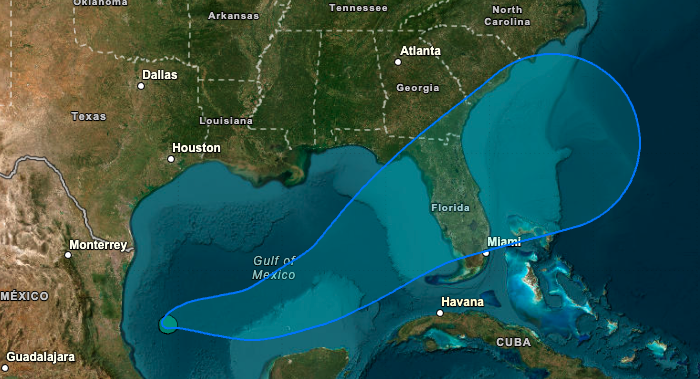All eyes are on a wave in the Atlantic Ocean that could become the next named system of the 2021 hurricane season.
The system was located about 40 miles east-northeast of Dominica Monday with maximum sustained winds of 35 mph and was expected to become a tropical storm overnight Monday into Tuesday according to the National Hurricane Center in Miami.
The NHC was giving the system about an 80% chance of formation as it moved to the west-northwest at 16 mph.
The Hurricane season is on. Our meteorologists are ready. Sign up for the NBC 6 Weather newsletter to get the latest forecast in your inbox.
All of South Florida was in the system's potential cone of concern Monday evening.
Through Monday afternoon, shower and thunderstorm activity had increased a bit but it has not reached the threshold to gain designation as a tropical depression or storm.
The wave was forecast to reach portions of the Lesser Antilles Monday night before it moves toward the Virgin Islands and Puerto Rico on Tuesday. By mid-week it would be near the treacherous terrain of Hispaniola.
A tropical storm warning was issued for Puerto Rico, including Culebra and Vieques; U.S. Virgin Islands; and the Dominican Republic on the south coast from Punta Palenque eastward and on the north coast from Cabo Frances Viejo eastward.
A tropical storm watch was issued for Martinique and Guadeloupe, Dominica, Saba and St. Eustatius, Dominican Republic on the north coast from Cabo Frances Viejo to the Dominican Republic/Haiti border, and Haiti from the northern border with the Dominican Republic to Gonaives.
Heavy rains and flooding are likely for the Leeward Islands, Virgin Islands and Puerto Rico, the NHC said.
A reconnaissance aircraft may fly into the system as early as Wednesday morning to collect data, aiding the forecast.
Local
It was too soon to tell how the system may - if at all - influence South Florida’s weather late-week and into the week. For now, shower and thunderstorm chances are expected to increase as the entity, in whatever state it may be in, likely passes to the south.
Meanwhile, a second wave that was located further east of the Lesser Antilles that had been given a low chance to develop was no longer expected to form.



